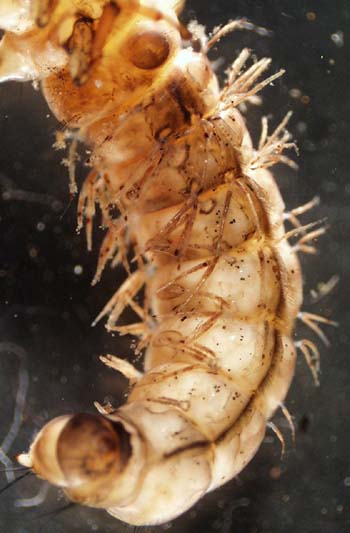
THE XERCES SOCIETY FOR INVERTEBRATE CONSERVATION Aquatic Invertebrates in Pacific Northwest Freshwater Wetlands |
| Identify taxa |
Limnephilidae (northern case makers) |
One in every four caddisfly genera in North America belongs to the family Limnephilidae. This family is very diverse in the number of species, case shape and composition, habitat preference, and appearance. They can inhabit a wide range of freshwater habitats, including marshes, lakes, large rivers, and springs; a few even inhabit wet terrestrial habitats. The genus Limnephilus was collected in riverine wetlands in the Willamete Valley of Oregon. Limnephilids are primarily vegetarians, shredding decaying plant and sometimes animal material to eat fungi growing within. A combination of characteristics separate northern case makers from other caddisflies. The top of the first thoracic segment is covered by a hard plate; the plate that covers the mesonotum has a straight anterior edge; and the metanotum is mostly fleshy with only a few small plates. The posterior two of those plates are always separate and have no hairs between them. Their antennae are halfway between the eyes and the front of the head; the first abdominal segment may have dorsal and lateral humps and scattered hairs; and they usually have a finger-like projection (prosternal horn) on the underside of the first thoracic segment. |
Size: medium to large |
|
© 2007 Xerces Society
Contact info@xerces.org





